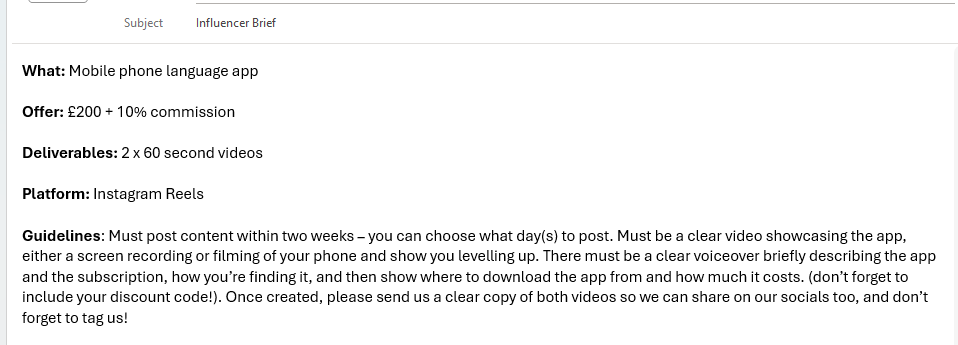In today’s digital landscape, influencer and ambassador collaborations have become a powerful strategy for businesses and brands to market their values and products, allowing them to connect with their target audience in a meaningful way. It’s important to know what this involves as it can be an easy mistake spending money on those who may not be suitable to promote your brand/business.
When finding the perfect influencers for your brand, it is important to remember the three R’s:
- Relevance: The influencer(s) you choose should align with your brands values and the interests of your target audience. This ensures that their endorsement of your brand is credible and feels authentic to their audience and also yours.
- Reach: This refers to the size of the influencers audience. A larger reach can undoubtedly mean more eyes on your brand, however to reach the correct audience it’s important to balance this with ‘Relevance’ and ‘Resonance’.
- Resonance: This is the influencers ability to engage and ‘influence’ their audience. A highly engaged follower base is more likely to take action based on their recommendations.
The type of influencer you choose should also be taken into consideration as this can massively impact your results:
- Mega Influencers are influencers who have a following of over 1 million, and are typically known as ‘celebrities’ or ‘top-tier’ influencers. They offer a substantially larger reach, however this typically comes with a substantially larger price tag, not always guaranteeing that you will get the engagement you would like due to them most likely having a varied audience.
- Macro-Influencers are influencers who have a following of 100k to 1 million, so a step down from ‘Mega Influencers’. They tend to have a significant but more niche audience, which creates a good balance between reach and engagement.
- Micro-Influencers have a smaller but highly engaged audience of 10k – 100k followers, meaning their recommendations can often carry more weight due to their authenticity and potential expertise.
- Nano-Influencers are those who have less than 10 thousand followers. They can be incredibly effective as they have a much more intimate relationship with their audience. This means that they will most likely provide higher engagement rates, and at a lower cost!
Having read what influencer marketing is, you may be wondering how to get started?
- First you will need to define your goals, deciding what you want to achieve, pinpointing whether its to increase brand awareness, drive sales, or enhance engagement.
- You then need to identify your audience. It’s important to understand your target audience and find influencers who are relevant, have the right reach, and resonate well with your brand (the three R’s!).
- The next step, which will decide whether the influencer wants to work with you, is to create a compelling brief. In this you can outline your expectations, deliverables and any creative guidelines. It’s sometimes good to include a discount code for their audience, which the influencer can earn commission from.

- The final step once the influencer has created and posted their content is to track success. You can do this based on engagement rates, conversions and overall ROI (Return on Investment).
Spent: £200
Earned: 15 sales x £5.20 = £78
8 yearly subscriptions x £32 = £256
= £334
ROI = 67% (£134)
Having the right approach to influencer marketing can really elevate your brand to new heights, just don’t forget to consider the different types of influencers, finding the ones who resonate the most with your brand/business.







